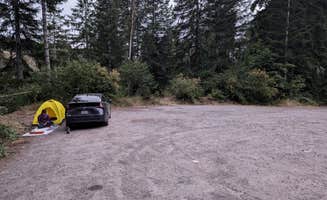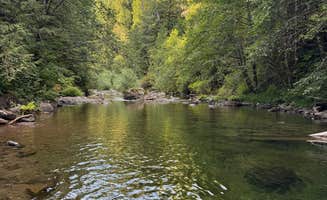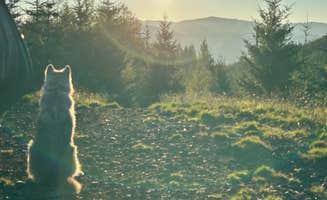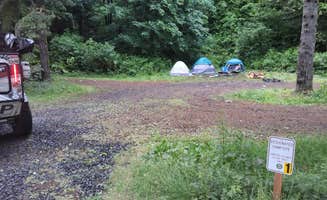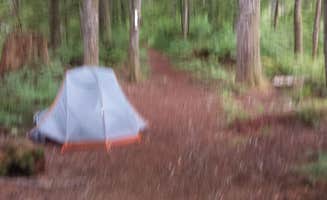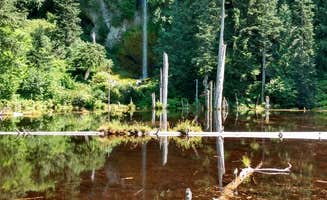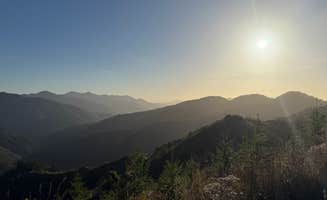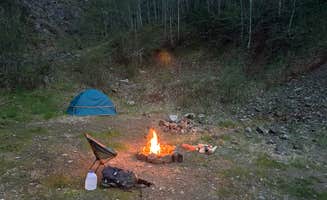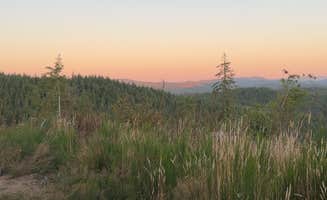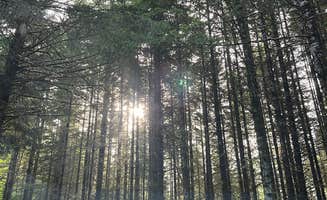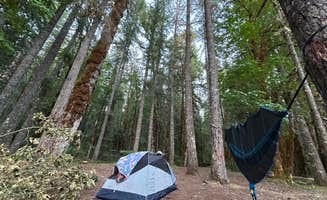Primitive camping near Scappoose, Oregon centers mainly around the Tillamook State Forest region, which sits at elevations between 1,500-3,000 feet in the northern Oregon Coast Range. Winter temperatures often drop below freezing with snow accumulation possible from November through March. Roads accessing the backcountry camping areas frequently close during winter months due to ice and snow conditions.
What to do
Waterfall hiking: At Beaver Falls Trailhead, campers can access a short trail leading to a scenic waterfall. "The hike to the falls is to the far left of the pullout. Do NOT go down the super steep trails to the right. Beautiful waterfall after a short hike," notes Mike S. The falls area provides a refreshing spot during summer months.
Mountain biking: Forest service roads throughout the region offer various difficulty levels for mountain biking enthusiasts. Many routes connect to established trail systems. "The area surrounding the site is trafficked regularly by the looks of it," mentions Logan K. from Tillamook Forest Dispersed camping area.
Target shooting: Some areas permit target shooting with appropriate safety precautions. "Guns/target practice everywhere," reports James T., highlighting the popularity of this activity in certain sections. Always check current regulations as designated shooting areas change seasonally.
What campers like
Elevated views: Tillamook State Forest Dispersed Camping offers exceptional viewpoints from higher elevation sites. "Sunrise was one of best I've ever seen, especially with the clouds below. Easy to find spots," shares Eric R. Several dispersed sites provide panoramic vistas across multiple mountain ranges.
Riverside camping: Many visitors appreciate access to creeks and streams. At Little Soda Springs Rd Dispersed, "There were about three sites. I stayed at the first site when you first get there back there on the right hand side. It's a short hike down to the creek," explains Vanessa T.
Seclusion options: Despite proximity to Portland, quiet camping locations exist throughout the region. "I decided to come back thinking I'd stay in the same spot as last time, but it was occupied. Thank goodness! Because I found THE most amazing spot!" shares another Vanessa T. review about Little Soda Springs. Sites farther from main forest roads typically offer greater privacy.
What you should know
Road conditions: Access to many sites requires navigating unmaintained forest roads. "Road got a little bumpy getting out here but once we found a spot right near the riverbank, you felt like you were deep in it," explains Jeffrey P. about Gifford Pinchot National Forest-Canyon Creek Dispersed Camping.
GPS reliability: Navigation systems often provide inaccurate directions to dispersed camping areas. "The coordinates did not take us to the exact spot, but the pin on the map was the closest," notes Brianna S. about Cole Mt Ridge. Paper maps or offline navigation apps are strongly recommended.
Cell service: Most dispersed camping areas lack reliable cellular connectivity. "No cell service!" emphasizes Lindsey N. about primitive camping locations. Higher elevations occasionally provide limited signal strength for emergency communications.
Permit requirements: Many sites require appropriate forest permits. "You must have a Northwest Forest pass or America the Beautiful pass. Forest service does drive through there frequently to check," advises a camper about roadside camping.
Tips for camping with families
Safety considerations: When camping with children, choose sites away from steep drop-offs. "The trail all the way on the left side of the parking lot takes you to the falls. The trails in the middle of the lot are super steep and muddy and don't lead to the falls," advises Jeremy B. about Beaver Falls Trailhead - Overnight.
Noise levels: Sites near OHV areas experience significant noise, especially on weekends. "Heard some OHV noise at night, and target shooting in the distance at sunrise," reports Kyle B. about dispersed camping. Weekdays generally offer quieter conditions for families.
Wildlife awareness: The region hosts black bears, cougars and coyotes. "My 3 dogs with me & only one night did they make a fuss about something outside the tent, but I assumed it was due to the pack of coyotes howling in the distance," shares Michael P. Food storage in vehicles is recommended.
Tips from RVers
Site limitations: Most dispersed sites accommodate smaller RVs only. At Mount St. Helens Dispersed Camping, "There are a lot of places for dispersed camping along FS-83... There are many spots to choose from for cars, trucks, and vans. It doesn't seem like it's designed for RV's and trailers," explains Chris.
Level parking: Finding flat spots presents challenges for larger vehicles. "Only downside is it's not perfectly flat. It wasn't too bad though. I just parked with my head pointing uphill when I go to bed, of course," suggests Jeremy B. Bringing leveling blocks is recommended for RVs and trailers.
Turn-around space: Consider vehicle maneuverability when selecting sites. "The dirt was solid — I wasn't worried at all about getting stuck in the mud. Plenty of room to turn around with ease," notes a reviewer about pull-off areas suitable for smaller rigs.


